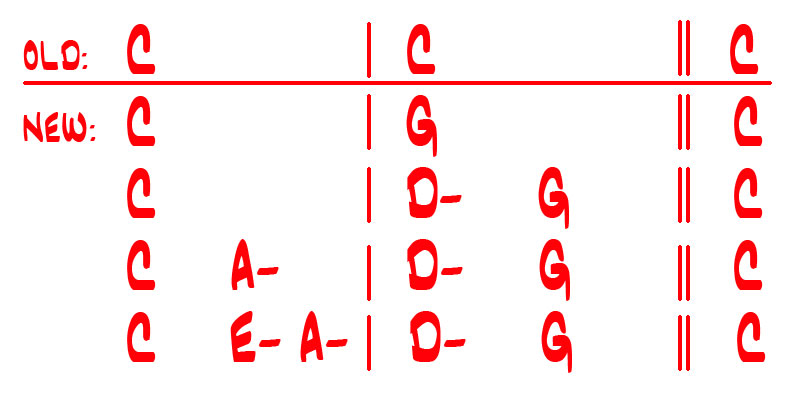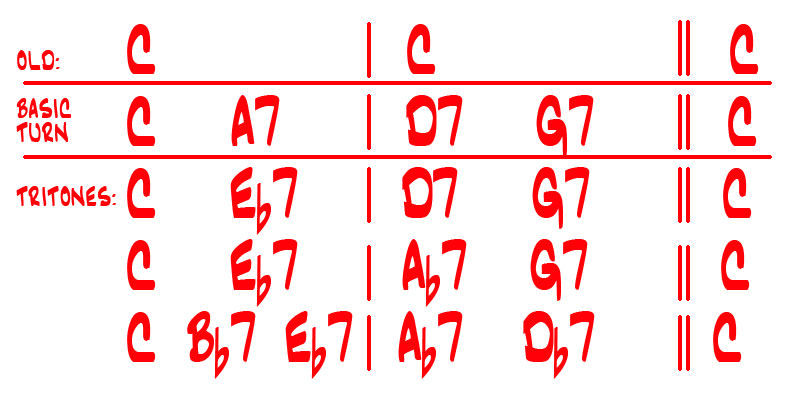Free Lessons
The turnaround in music (Part 2)
If you missed yesterday’s post, I started talking about the turnaround. A turnaround is a sequence of chords that are used at the end of a section that fill up space and naturally lead to the start of the next section.
As a simple example, if you end a section on a I chord and the next section starts on a I chord, why not insert a V between those two I chords? The V will naturally lead to the one. Here is an example of that. Rather than just camping out on the I chord for two bars at the end of the section, use a V on the second bar.

The cool thing is that this example is only the start. I am going to throw some other ideas at you now that will get more complex as they go.
This set of turnarounds are based on the circle of fifths. You guys have heard me talk before many times about how chords like to move down in fifths. Here is an example of how that concept works in a turn around.

That will get you started. The truth of course is that the number of chords you use and their exact position depends on the song and your personal style. You could cram about 8 chords in there if you wanted to and it might be complicated but it might not work well with the style of the rest of the song. In general, my rule of thumb would be to look at how many chords you are using per bar in the rest of the song and stick with that. If you are changing chords on every beat, use a turnaround that puts a new chord on every beat.
Now, if you want a complex sound, you can change those minor chords into dominants like this.

What I am showing you now is starting to have a very complex sound requiring sophisticated voicing. If you go to this point and beyond, you are going to start sounding jazz-like and depending on your music, you might have to be careful. In this particular example, I turned all the minor chords into dominants but of course you don’t have to go that far. You can just change a few of them into dominants if you want.
The logical next place we can go is to start changing out these dominant chords using tritone substitutions. The rule of a tritone substitution is quite simple really: any dominant can be substituted for the dominant a tritone (3 whole steps) away. Here are some possibilities.

You will have to look at these carefully to understand what is happening. I am using combinations of tritone substitutions and dominants. I could go way, way further than this but for the time being, will stop there.
Turnarounds can be created in other ways too. Basically if you have a favorite chord progression that ends on the right chord (in this case, the I chord), it can be your turnaround. For example, one of my favorite turnarounds is #4m7(b5) – 4m6 – 3m7 – b3dim7 – 2m7 – b2M7 – 1. If you have listened to me play much, you have heard me play that one.
Now a lot of this is pretty complex and if you are just overwhelmed right now, here is a bit of advice. When you come to a scenario that needs a turnaround and the next section starts with a I chord, just throw a ii – V in front of it. That will sound great and get your feet wet. ii – V is still the most common turnaround in modern music and for that matter, the sound I usually go with.
